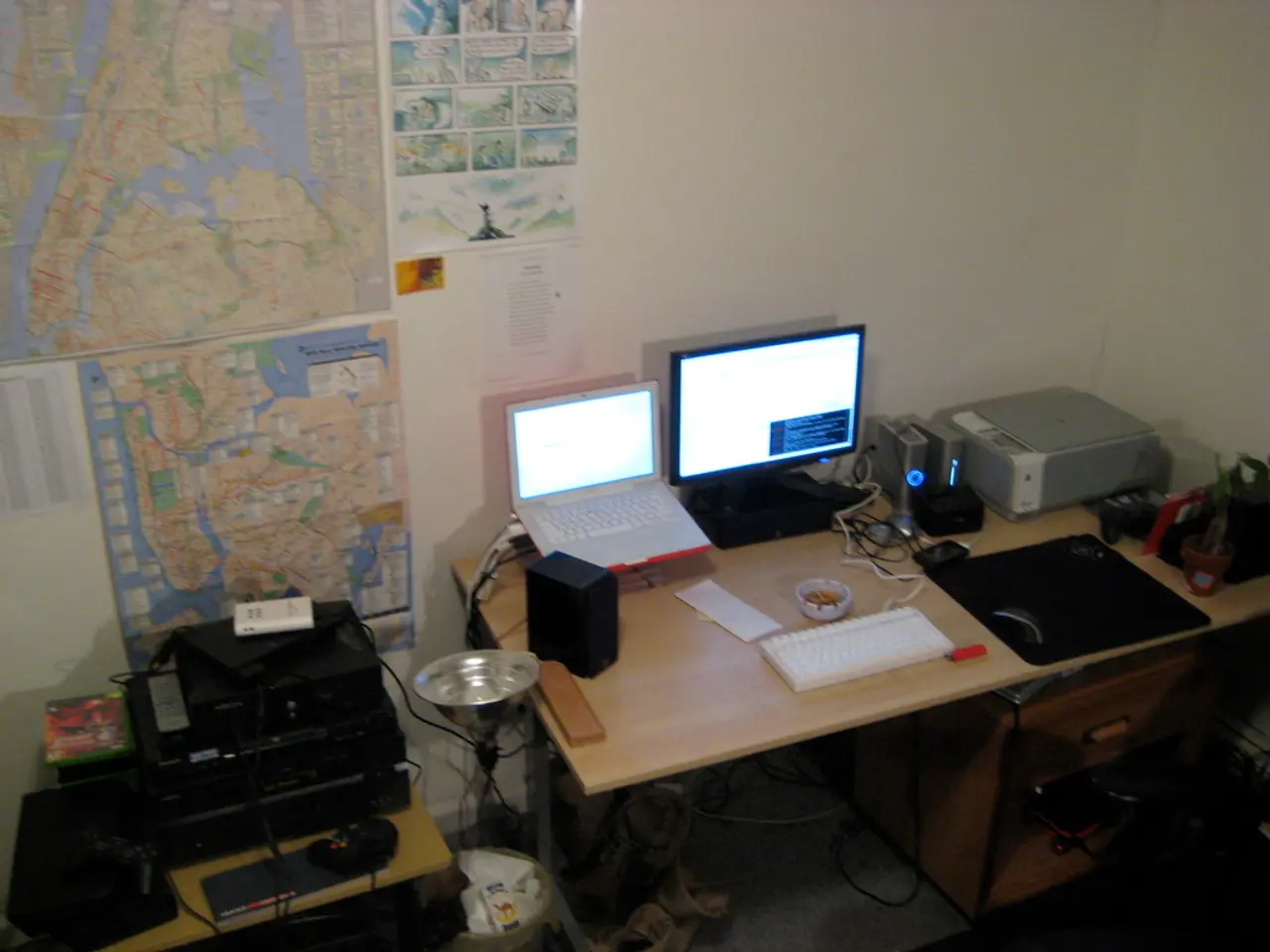Enhancing customer interaction in retail and hospitality sectors through cutting-edge methods
Tech Transformation Reshapes Retail and Hospitality Sectors
The retail and hospitality industries are undergoing a significant transformation in 2025, driven by the adoption of cutting-edge technologies such as AI, IoT, advanced display and audio technologies, and automation. This shift is aimed at adapting to changing consumer behaviours and economic conditions, enhancing personalization, efficiency, and the overall customer experience.
In the hospitality sector, AI-powered personalization is at the forefront, enabling hyper-personalized guest experiences. This includes AI-driven dynamic pricing, chatbots, mobile check-in, and robot-assisted services like robot chefs and cleaning robots. Automation and smart services help alleviate staff shortages while improving service quality.
Sustainability and wellness are also key focuses, with eco-friendly initiatives and health-focused amenities reflecting consumer demand. Technologies such as IoT sensors, energy-saving devices, predictive ordering, and contactless payments improve operational efficiency and guest convenience. The hospitality tech market is projected to grow rapidly, reaching around $29.65 billion in 2025 with a CAGR near 27.8%.
The experience economy is another significant driver, with travelers prioritizing unique local experiences, wellness excursions, and personalized activities over traditional room features. This has led hotels to become lifestyle destinations and integrate luxury and blended travel options. The US hospitality market is expected to reach approximately $313.87 billion by 2030, driven by digital transformation, increased disposable income, and innovations in booking and customer engagement that reduce acquisition costs and boost repeat visits.
The retail sector is also embracing these innovations to optimize inventory, reduce labor, and enhance the in-store shopping experience. Key technologies include Electronic Shelf Labels (ESLs) that allow dynamic price changes, RFID for real-time inventory tracking, and smart shelves equipped with sensors to monitor product availability. AI-driven predictive analytics and personalized offers displayed through digital kiosks and shopping apps reduce cart abandonment and drive sales.
Modern point of sale systems, including self-checkouts, also serve as data sources to improve operations and customer engagement. Although audio technology is less explicitly mentioned, in-store audio systems often complement digital signage to create immersive shopping experiences through announcements, music, or voice control interfaces.
Both sectors are heavily investing in AI to improve decision-making, personalization, pricing strategy, and customer interactions. There is a trend for strong demand for clothing and electronics online, while the decline in traditional hospitality outlets like pubs and clubs on high streets over the past ten years is significant.
Simultaneously, there has been a trend in favour of redevelopment of high street spaces into residential or mixed-use. Technologies like digital signage are now seen as a means to create revenue in the R&H sector, rather than just an infrastructural investment. Interactive kiosks, product information displays, catalog browsing, wayfinding, digital menu boards, and general promotional digital signage are common uses of digital signage technology in R&H.
Audio technology has played a crucial role in shaping ambiance, reinforcing brand identity, and enhancing communication in R&H. The demand for digital signage technology is high in food & beverage, retail, and hospitality sectors, with the sales model often requiring a lot from the display estate and CMS partner.
The adoption of Smart TVs in hotels and on cruise vessels has been a significant source of growth in the hospitality sector. Developments in connectivity, interactivity, and cloud-based management are increasing the scope of R&H displays. Large displays using LED technology are driving growth for many vendors across different facets of R&H.
Cloud solutions for R&H displays, such as Connected Care, increase the real-time information available to IT managers and enable predictive maintenance. Hotels have additional requirements for digital signage, including conference space displays, meeting room signs, and digital concierge services.
There is growing interest in immersive audio systems and professional-grade audio solutions for R&H venues. The Era 100 Pro premium speaker with Power over Ethernet (Poe) and custom audio zone creation is popular among mid to high-end retail and hospitality venues. AI is expected to play a transformative role in creating a more personalised retail ecosystem, with personalised audio experiences and streamlined system management.
In summary, technology—especially AI, IoT, display, and audio innovations—is reshaping retail and hospitality by elevating personalization, operational efficiency, and customer engagement amidst evolving consumer expectations and economic pressures. These sectors are embracing smart, sustainable, and experience-rich offerings to remain competitive and capture growth opportunities in 2025 and beyond.
- In the retail sector, AI-driven predictive analytics and personalized offers displayed through digital kiosks and shopping apps are being implemented to reduce cart abandonment and drive sales.
- The hospitality industry is utilizing AI-powered personalization, such as AI-driven dynamic pricing, chatbots, mobile check-in, and robot-assisted services like robot chefs and cleaning robots.
- Large displays using LED technology are driving growth for many vendors across different facets of retail and hospitality.
- There is growing interest in immersive audio systems and professional-grade audio solutions for retail and hospitality venues, with the Era 100 Pro speaker being popular among mid to high-end retail and hospitality venues.
- The adoption of smart TVs in hotels and on cruise vessels has been a significant source of growth in the hospitality sector, with developments in connectivity, interactivity, and cloud-based management increasing its scope.




